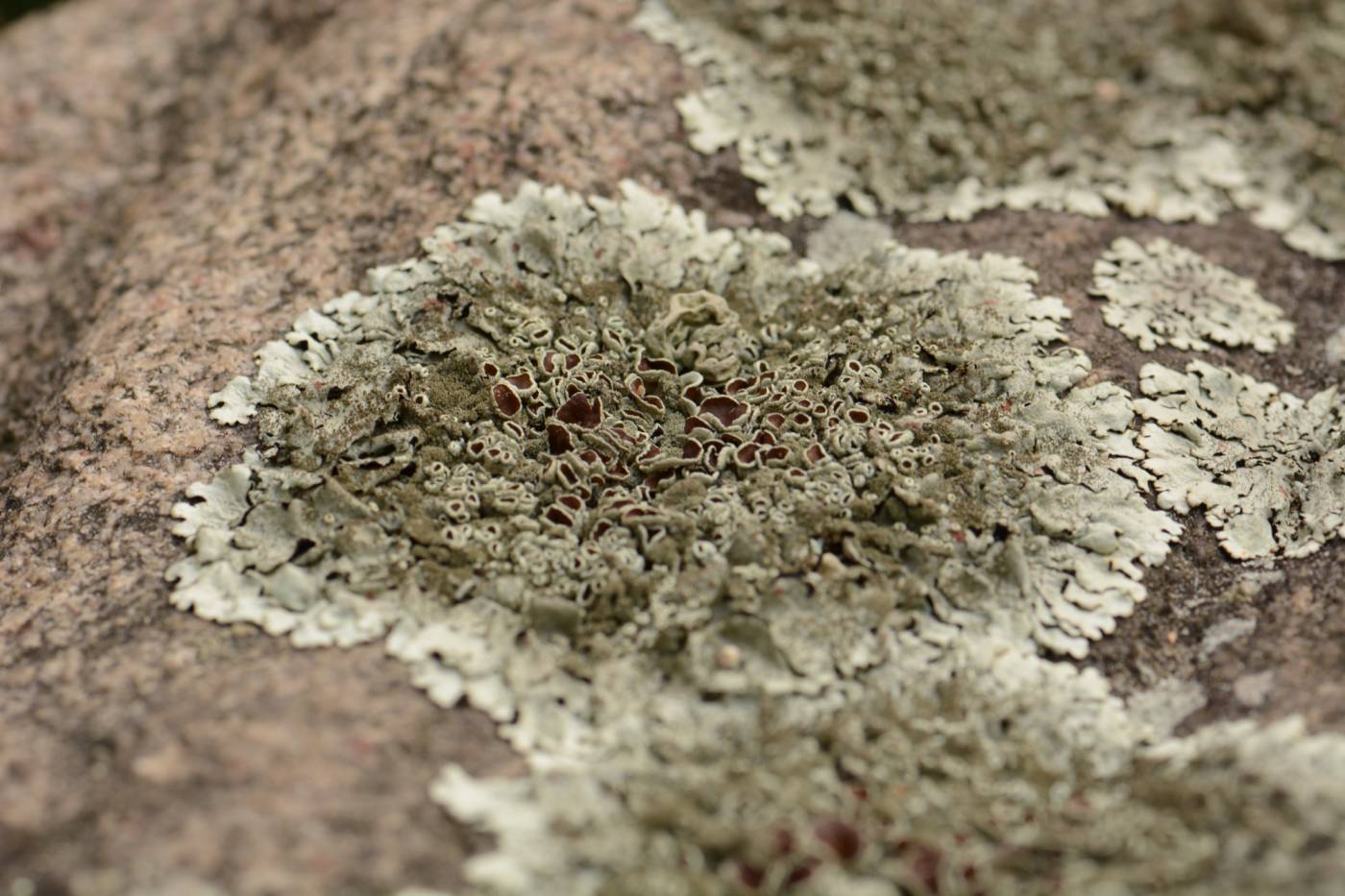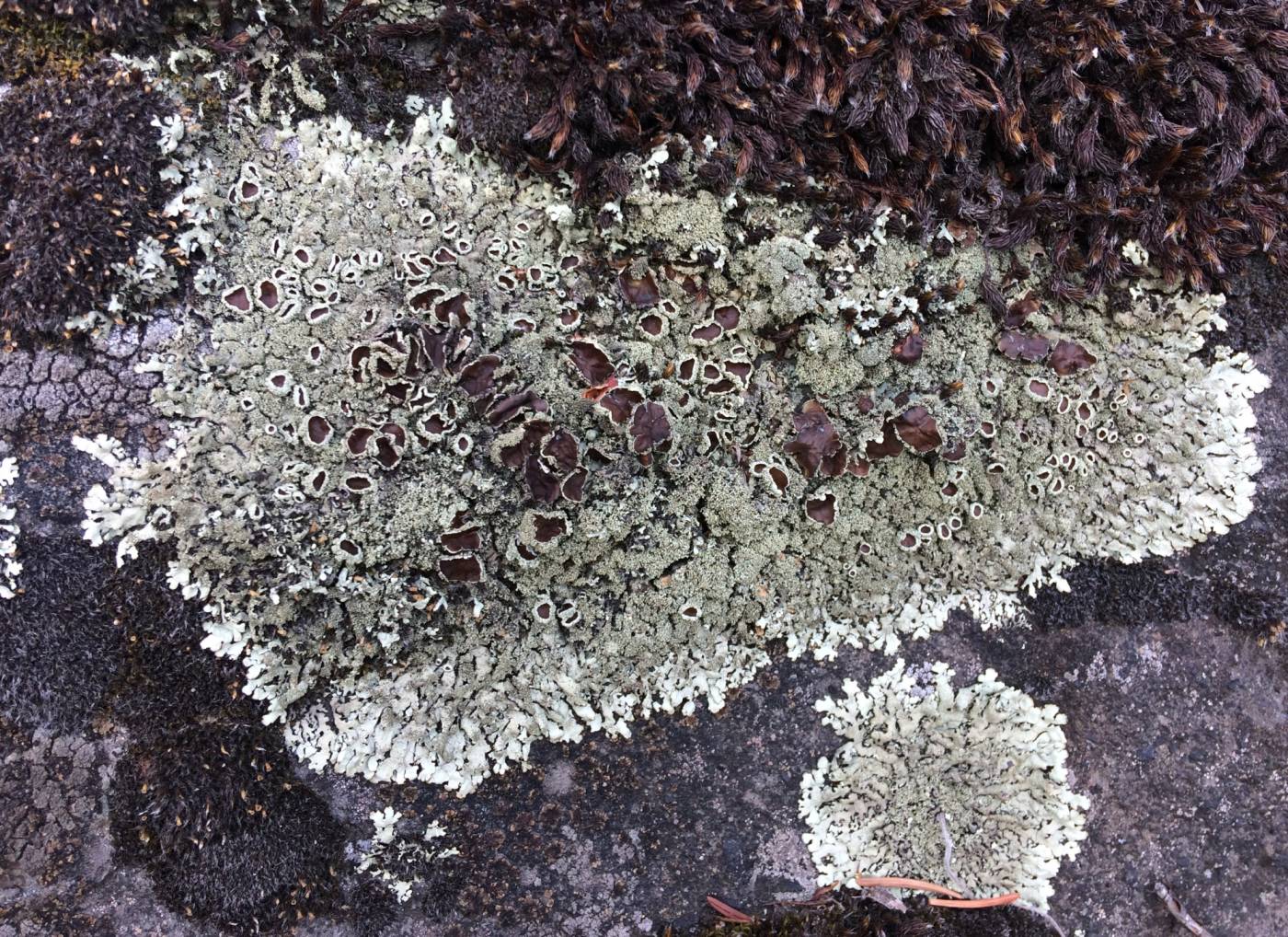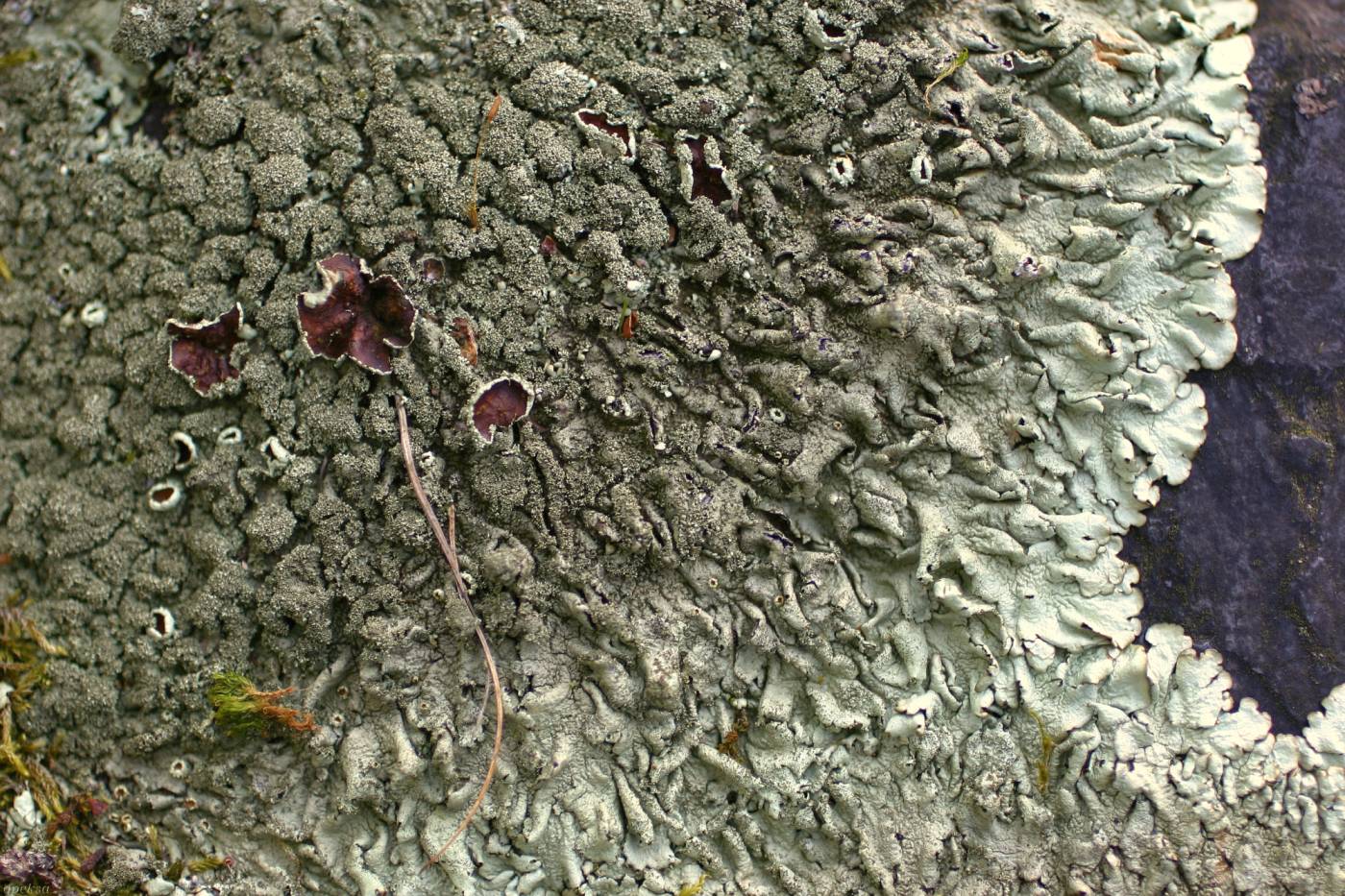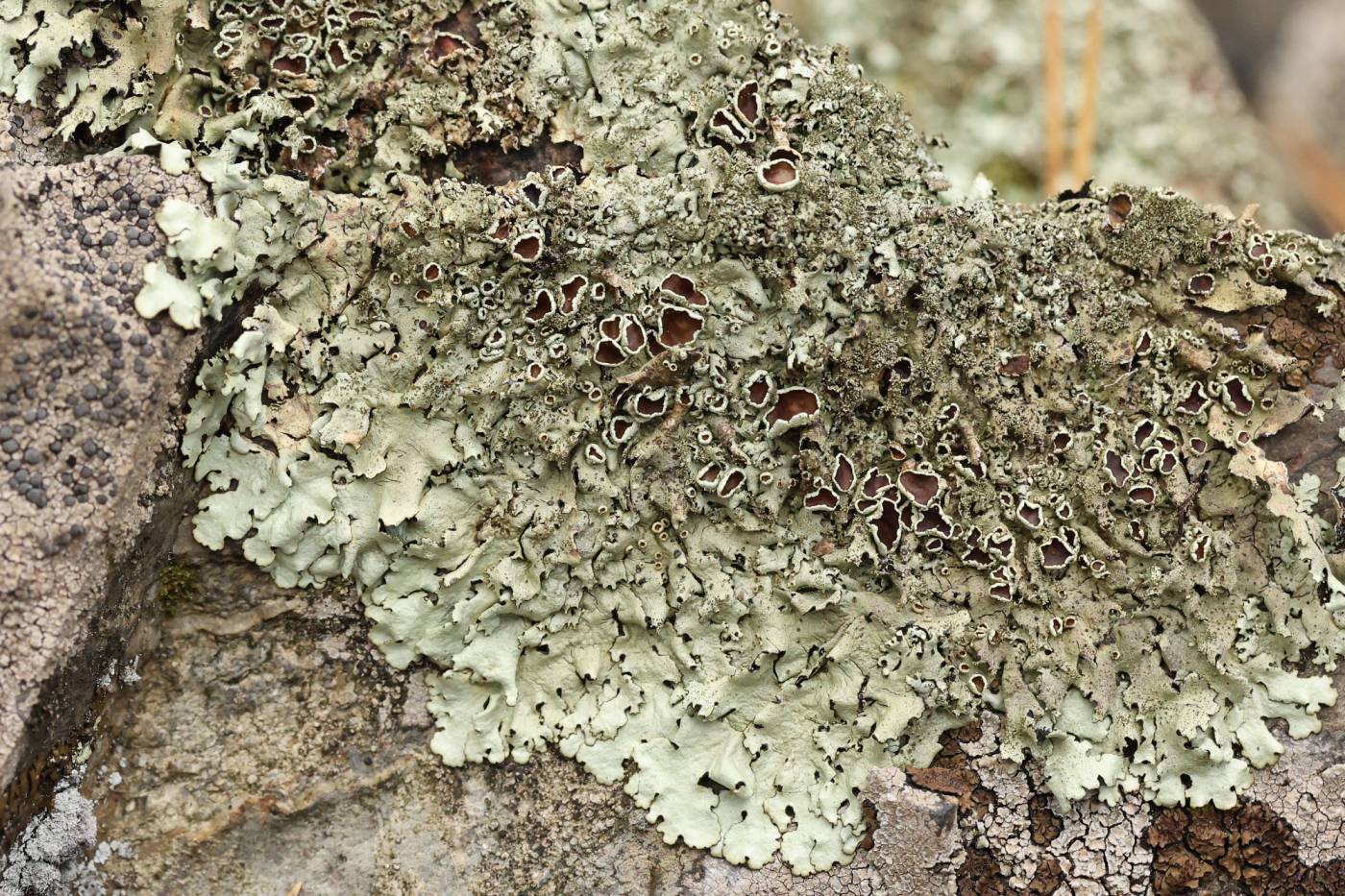The most common yellow-green Xanthoparmelia in the Czech Republic. It is distinguished by the combination of the black lobe underside and the presence of the stictic acid complex in the medulla (K+ yellow to orange). It grows on sun-exposed siliceous and extrusive rocks from the lowlands up to ca. 1000 m a. s. l. It is often the dominant species. The lichen tolerates eutrophication and occasionally colonizes tree bases and wood as well. It is common throughout Europe, excluding limestone areas.
There is an uncertain record of a similar but more thermophilic X. verrucigera from the Máslovická rokle, north of Prague (Suza 1940). The herbarium specimen, however, has not been found and the species has not been confirmed at the locality (Orthová 2003). It is distinguished from X. conspersa by the presence of lusitanic and verrucigeric acid and the absence of norstictic acid (K+ yellow). Its presence in the Czech Republic is only little probable. Neither is it known from the surrounding countries.
Literature: Suza J. (1940): Doplňky k rozšíření lišejníků v Čechách. Část V. – Časopis Národního musea, sect. natur., 114: 77–86. Orthová V. (2003): Rastie lišajník Xanthoparmelia verrucigera v Čechách? – Bryonora 32: 1–2.
taxonomic classification:Ascomycota → Lecanoromycetes → Lecanorales → Parmeliaceae → Xanthoparmelia
Red List (Liška & Palice 2010):LC – least concern
Occurrence in the Czech Republic
All records: 699, confirmed 343. One click on a selected square displays particular record(s), including their source(s).





